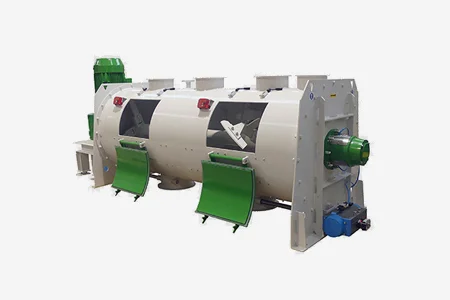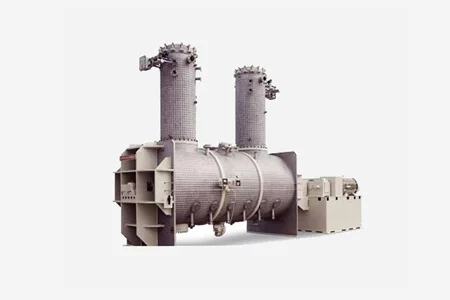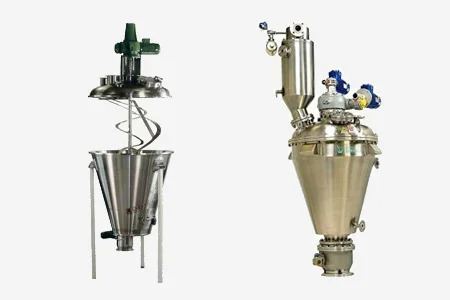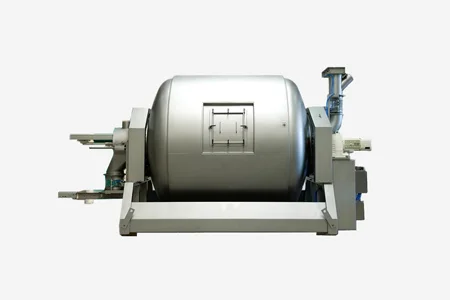HOME > Products > Mixing and Drying > Fluid Bed Dryer
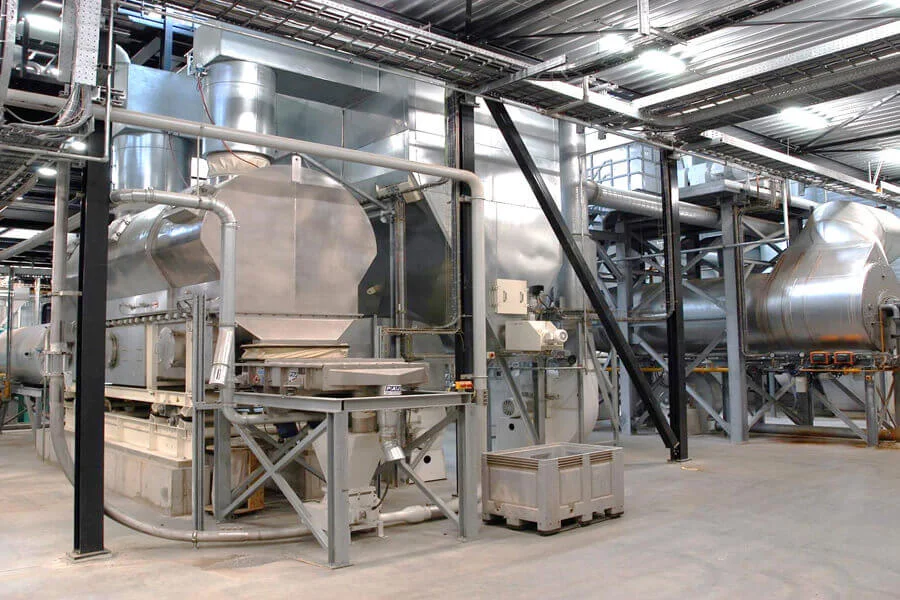
Fluid Bed Dryer | TIERMAX
Fluid Bed Dryer
Fluid bed dryer (Fluidized bed dryer) is equipment used extensively in the food, animal feed, pharmaceutical, chemicals, and mineral industries to reduce the moisture content of wet powder, granules or flakes.
Materials processed in an exceedingly Fluidized Bed appliance or Cooler float on a cushion of air or gas.
An upward-moving gas flow makes a product or solid fluid in a fluid bed dryer. The fluid bed dryer’s mechanical movement enhances this effect. Gas and product are thus thoroughly mixed, resulting in high heat transfer and the fastest possible physical reaction. Gas speed and mechanical movement can be used to effectively process a wide variety of granular products with minimal dust formation by selecting the right combination.
Hot drying air is blown through the holes of a base plate. The wet solids are lifted from the bottom and causes the solids to behave as a fluid. The air velocity is adjusted to keep the moving layer of material fluidized.
Advantages of Fluid Bed Dryer :
Low energy consumption compared to other type of dryers
Wide range of products can be processed
Controlling the residence time precisely
Uniform dried products
Sensitive materials: (no friction)
Low operating costs
Low-maintenance because of few wear points
Reliable system, less downtime
Fluid Bed Dryer Applications:
Agglomerating conditioning drying Sterilizing
Baking
Blanching
Calcinating
Drying
Pasteurizing
Sterilizing
Freeze drying
Inert gas drying
Puffing
Steam stripping
Roasting
Features of Fluid Bed Dryer :
Residence time:
Flexibility of residence time
Temperature:
Flexibility of potation temperature
Operation:
Multi zones, velocities, temperatures, drying & cooling
Custom design:
Easily removable bed dryer plates
How does a fluid bed dryer work?
Hot drying air is blown through the holes of a base plate. The wet solids are lifted from the bottom which causes the solids to behave as a fluid. The air velocity is adjusted to keep the moving layer of material fluidized.
An upward-moving gas flow makes a product or solid-fluid in a fluid bed dryer. The fluid bed dryer’s mechanical movement enhances this effect. Gas and product are thus thoroughly mixed, resulting in high heat transfer and the fastest possible physical reaction. Gas speed and mechanical movement can be used to effectively process a wide variety of granular products with minimal dust formation by selecting the right combination in a fluid bed dryer.
Fluid bed dryer design:
Fluidizing gas is evenly distributed across the bed thanks to the design of the distributor plate. Because of the high gas velocity, only the smallest particles are transported to the dust collection equipment. The feed rate fluctuation is easily absorbed and allows for a high production capacity turndown ratio. Product contact with moving parts is rare in most cases.
Fluid bed dryer application in food, dairy, and nutraceuticals:
Within the food, dairy, and nutraceuticals industries, the fluid bed is applied for:
– Derivates
– Supplements
– Constituents
– End products
A whole range of products can be reused in the fluid bed and sub fluid bed and long hearthstone times, up to two hours per machine, are possible.
Naturally, hygiene has a top priority in the food industry. The sanitary design (FDA/USDA-GMP) ensures that our installations meet the high requirements of this industry. Our installations are completely made of stainless steel.
The quick-acting closures and the W.I.P. system (Washing-In- Place) make the installation easy to disassemble and clean. Then production can quickly be resumed.
We can supply a closed-loop fluid bed dryer with inert gas blanketing and solvent condensing and recovering for processes that contain solvents or alcohols.
Fluid bed dryer application in feed and biomass:
It is possible by means of fluid bed processing to upgrade waste products and make them suitable for reuse. In this way, the environment is burdened as little as possible.
Recycling and energy recovery from biomass play an increasingly important role in both residual stream management and global energy supply.
For example, we process potato residue into animal feed and soy protein into fish feed. We also upgrade grain slurries from breweries to DDGS. Due to its high protein content, it can be processed into cattle feed.
This industry will often have to deal with a product in which the size of the individual particles differ greatly from each other and the humidity is high.
Our fluid bed dryer guarantees a high evaporation rate at low temperatures and low energy consumption. Our unique drive ensures that we can make the fluid bed as big as the product requires.
Fluid bed dryer application in minerals:
You need to have a durable and corrosion-resistant fluid bed dryer for the sand, salt, and solid ore drying process. Our partner developed fluid bed dryers and coolers to ensure optimal results while minimizing attrition.
Moreover, drying systems for minerals and aggregates consume a lot of energy, leading to high operational costs and low margins. Our high-efficiency fluid bed dryers typically result in energy savings of 30-60%, which makes our fluid bed dryer the most energy-efficient of all drying solutions.
Processing minerals require high temperatures. The fluid bed temperatures up to 600C can be achieved.
Efficient consumption of energy is possible due to heat recuperation/recovery from the flue/discharged gases. In addition, the fluid bed can be divided into different compartments.
In this way, it is possible to dry and cool (evaporative) within a single installation, which saves a lot of space. Also, our fluid bed system has a very short start-up and stopping time.
Other advantages are lower energy consumption, drying and cooling within one machine, and long service life of the installation.
Fluid bed dryer application in chemical:
Corrosion of valuable components might well be the biggest threat to industrial-chemical processes. Therefore, when designing equipment, it mostly comes down to a custom selection of materials, so that an optimal and sustainable process can be guaranteed.
To meet the requirements of the production process, we opt for materials such as titanium, Hastelloy, duplex, or super-duplex plastics.
Moreover, when you choose our solution, you opt for the most energy-efficient solution.


